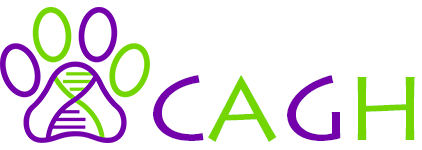Authors Céline Le Béguec (1), Valentin Wucher (1,2), Aline Primot (1), Edouard Cadieu (1), Lætitia Lagoutte (1,3), Nadine Botherel (1), Benoît Hédan (1), Clotilde De Brito (1), Anne-Sophie Guillory (1), Jérôme Abadie (4,5), Kerstin Lindblad-Toh (6,7), Catherine André (1), Thomas Derrien (1), Christophe Hitte (1)
Affiliations 1. Univ Rennes, CNRS, IGDR (Institut de génétique et développement de Rennes) - UMR 6290, F-35000 Rennes, France. 2. Present adresse: Centre for Genomic Regulation (CRG), The Barcelona Institute of Science and Technology, Dr. Aiguader 88, Barcelona 08003, Spain. 3. Present adresse: UMR PEGASE, Agrocampus Ouest, INRA, 35042, Rennes, France. 4. Laboratoire d’Histopathologie Animale, ONIRIS, Ecole Nationale Vétrinaire, Agroalimentaire et de l’Alimentation Nantes-Atlantique, Nantes, France 5. LUNAM University, Oniris, AMaROC, Nantes, France 6. Broad Institute of MIT and Harvard, Cambridge, MA 02142, USA 7. Science for Life Laboratory, Department of Medical Biochemistry and Microbiology, Uppsala University, Uppsala 751 23, Sweden
Presentation Type Poster
Abstract
Recent efforts have extended the dog genome annotation with the discovery of thousands of long non coding RNAs (lncRNAs) using the machine-learning based tool FEELnc [1]. Although lncRNAs have been shown to play important roles in many biological processes, and particularly in cancers [2], it remains challenging to assign functions and classify lncRNAs in order to interpret their impact on cancers and genetic diseases. Here, we integrated genomic and transcriptomic features from the extended canFam3.1-plus annotation to perform bioinformatic functional predictions of lncRNAs. We first characterized expression patterns of 10,444 canine lncRNAs in 26 distinct tissues representing various histological and anatomical localizations. We defined tissue specificity profiles of lncRNAs and deduced potential functionality and evolutionary origins through comparative genomic and transcriptomic analysis with human data from the ENCODE project (ENCyclopedia Of DNA Elements).
As in human, we show that canine lncRNAs are lower expressed than protein coding genes (mRNAs). Among the 26 tissues, we detected 4,600 tissue-specific lncRNAs. Unsupervised hierarchical clustering based on lncRNA expression levels recapitulates tissue origins and pinpoint candidate lncRNAs likely associated with specialized functions, such as nervous and integumentary clusters. Furthermore, we identified more than 900 conserved dog‐human lncRNAs for which we show their overall reproducible expression patterns in both species through comparative transcriptomics. We then constructed co-expression networks and found significant correlations (| rho | > 0.5 and adjusted p-value (BH) < 0.05) for 7,615 lincRNA:mRNA and 524 antisense:mRNA pairs. These results revealed co-expressed modules that may predict regulatory relationships and/or the evolutionary origin of subsets of lncRNAs. Using functional annotations based on GO biological processes terms, we found 23 clusters significantly enriched (adjusted p-value (BH) < 0.05) corresponding to developmental processes 'sensory organ development’, ‘axon development’ or ‘hindbrain development’.
We conducted a pilot study of melanoma in dogs, we performed differential expression analysis using matched tumour/control RNA-seq samples from canine buccal melanomas. We identified 930 lncRNAs with significant differential expression between tumour and control samples (FDR < 0.01). These lncRNAs represent potential biomarkers and/or candidate to study tumorigenesis of melanomas in dogs. Moreover, more than 100 of the 930 lncRNAs are conserved in human and can be used for further evaluating their therapeutic potential in both human and veterinary medicine. Altogether, this genomic and transcriptomic integrative study of lncRNAs constitutes a major resource for biomedical research in the dog species.
[1] Wucher V. et al. FEELnc: a tool for long non-coding RNA annotation and its application to the dog transcriptome. Nucleic Acids Research. 2017.
[2] Gillard M. et al. Naturally occurring melanomas in dogs as models for non-UV pathways of human melanomas. Pigment Cell & Melanoma Research. 2014.
